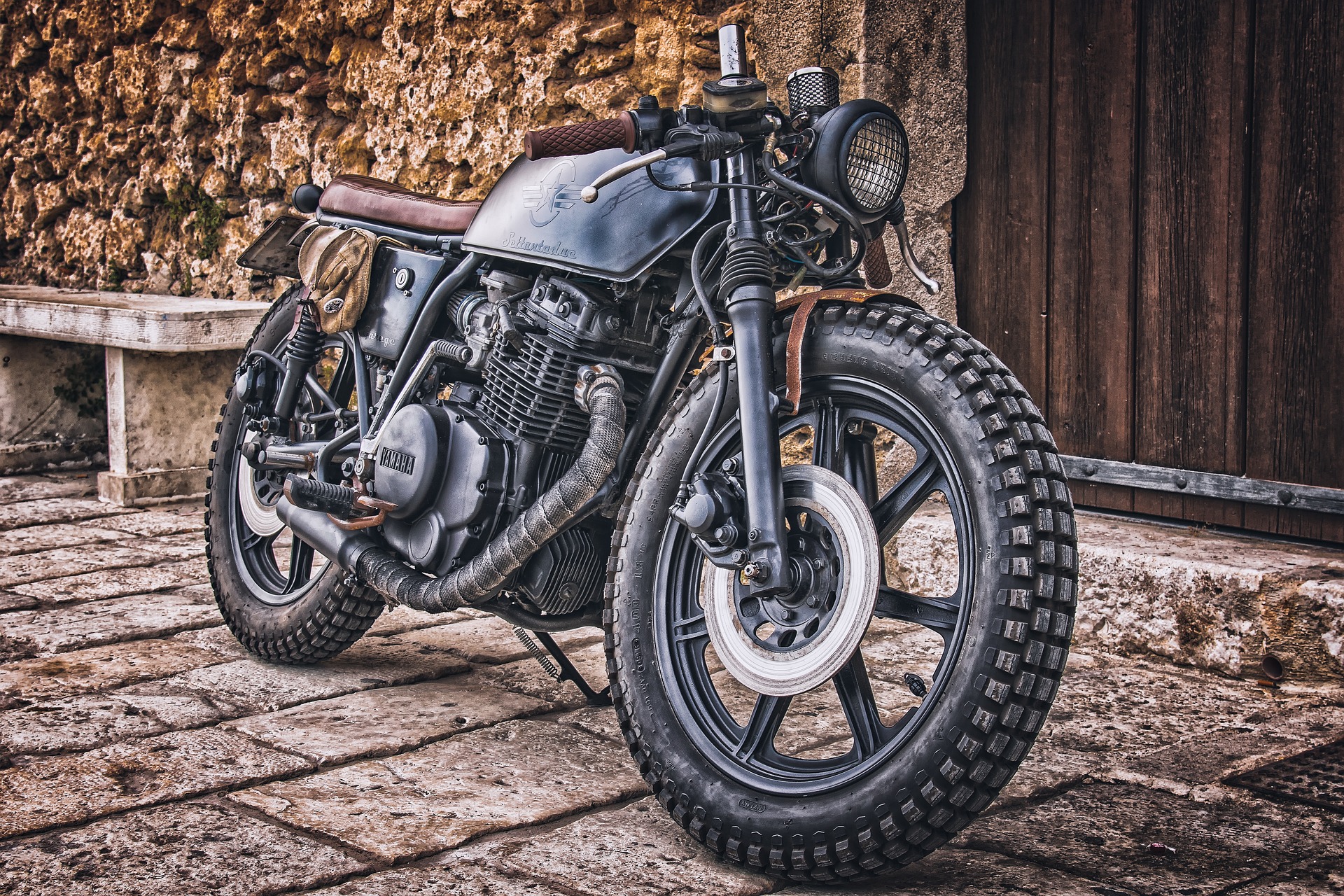Buckling motorcycle tire. Remove the steering wheel from the motorcycle. Immobilize the motorcycle by operating the center stand. Loosen the lug nuts by turning them counterclockwise with a wrench. Set the lug nuts aside and remove the wheel from the motorcycle. The center stand is located under the center part of the motorcycle. Read your owner’s manual for more specific instructions on how to activate it.
Buckled motorcycle tire – place a static balancer on a flat surface
Static balancers can be purchased online or at tire and motorcycle stores for around $100. Put the machine on the floor or on a table. Pick a spot that feels completely flat and stable. Dynamic balancers are also available. These devices test your wheel electronically. They are more expensive and are often used in tire and repair shops.
Test the balancer with a level.
Use any type of level from a home improvement store to test the balancer for evenness. Place level on top of balancer, secure to bar with tape if not holding in place. If the balancer is not level, move it to different places until you find level ground. A magnetic level is your best option because it sticks to the balancer bar.
Buckled motorcycle tire – Slide the wheel on the wheel balancer
The metal bar at the top of the balancer consists of 2 cones that point inwards. Pull 1 of the cones to the side and off the stem. Next, slide the wheel over the stem, pushing the axle sleeve over the cone.
Replace the other balance cone
Slide the cone over the balancer rod. Push it forward until it is snug inside the axle sleeve. The impeller must be centered on the stem and firmly secured between the cones.
As long as the cones are seated in the holes in the wheel axle, the tire will stay in place when you spin it later.
Degrease the rim with contact cleaner.
Obtain a bottle of WD-40 or other cleaner at a home improvement, automotive, or general store. Dampen a clean rag in the solution and use it to wipe down the edge. Remove any debris that may affect the balance test. Always clean the wheel, as debris can distort the results of the balance test. Although you can clean the wheel at any time, it is easier after you place it on the wheel balancer. You can easily reach all sides and the wheel will not accumulate additional debris before the test.
Debris also includes old wheel weights. Always remove old weights before attempting to balance the wheel. You can also use nail polish remover to remove stubborn residue, including adhesive residue from old weights.
Buckling Motorcycle Tire – Equalize Wheel Weight
Gently spin the tire and wait for it to stop. Spin the wheel so it spins 2 or 3 times. If you use too much force, tap your finger on the tire to slow down. When it comes to a complete stop, the heaviest part of the wheel will be at the bottom.
Mark the lowest part of the wheel with masking tape.
Peel off a small piece of tape. Place it at the bottom of the rim, right in the center. Secure it in place to mark the lowest point of the wheel. You can also mark this point with chalk. Mark this low point by drawing a small line on the tire.
Tape a wheel weight to the top end of the rim.
Purchase adhesive wheel weights at a tire store. The highest point of the wheel, opposite the point you marked earlier, is the lightest part of the wheel. Put the weight directly on the tire. Instead of peeling off the backing, secure the weight with a piece of duct tape. Wheel weights typically come in 5g (0.18oz) and 10g (0.35oz) sizes. Non-adhesive wheel weights wrap around the spokes and bolt on. They are less likely to come off, but are more expensive.
Spin the wheel to spin it again
Slowly turn the wheel until the taped side and weighted side are to the right and left. Then let go of the wheel and wait for it to stop. The heavier side will once again return to the bottom.
Add and remove weights to balance the wheel. Add weights to the lightest part of the wheel, which is always on top. If the weighted part is back on top, it’s still too light. If the weight ends up at the bottom, it’s too heavy and you need to remove some weight from that end. Clean the wheel if necessary to remove any remaining adhesive.
Stop adding weight when the wheel no longer spins on its own.
Test the wheel by spinning it until the heavy and light sides are right and left again. When the wheel is balanced, the tire does not move. The heavy side will not sink to the bottom. Test the wheel a few more times to make sure it’s balanced. Test the wheel by moving the taped end to different spots and releasing the wheel. Also gently turn the wheel so that it spins 2 or 3 times. The heavier side should not fall off.
Buckled Motorcycle Tire – Secure Weights In Place Before Replacing Wheel
Bring the weighted end down. Peel off the adhesive backing of the weights, then press them against the rim. They fit on the inside of the rim, right next to the spokes. Put the wheel back on your motorcycle and enjoy the ride. If you’re using the more expensive bolt-on weights, you should already have them attached to the rim. Wrap them around the spokes, then slide the screws into the slots on the back to hold them in place.
